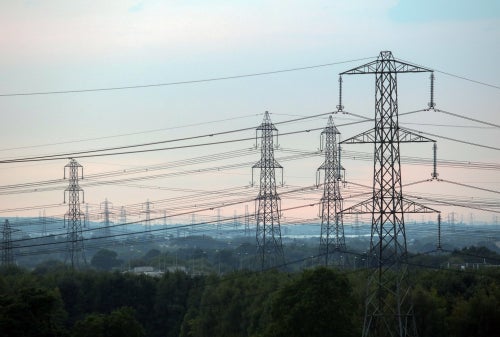

When Theresa May took the call from the DUP’s Arlene Foster that, albeit temporarily, put the brakes on the agreement of a Brexit divorce bill (which called into question the future border between Ireland and Northern Ireland), it once again demonstrated the complexity and uncertainty of the Brexit process.
The uncertainty was somewhat inevitable. After all, the process is unprecedented. But, as we’ve seen in the last 18 months, there are significant questions to be answered as to what the UK’s future relationship with Europe looks like. And that includes what the implications are for the British energy market and our ability to keep the lights on at home and at work.
At the moment, the UK is part of the EU’s internal energy market, which means we have access to and the ability to import electricity from the continent in order to meet particularly high levels of consumer demand, or alternatively to meet demand should we have outages within the UK grid.
As with much of Brexit, it is yet to be determined what our relationship with the EU’s energy market will be in the years after Brexit. It could be that we retain similar access to what we currently have. But, equally, it’s entirely possible we could be out of the internal energy market – particularly should we definitively leave the single market and customs union.
That’s a lot of ‘ifs.’ But it should prompt the thought of how we will meet energy needs in the future in anticipation of importing energy becoming more complicated or more expensive.
What this means in practice is that the UK needs to be more self-sufficient in its electricity generation, and more efficient in its energy usage.
These were recurring themes in government energy policy throughout 2017 – albeit driven by the imperative of fostering clean growth rather than addressing Brexit issues specifically. This clean growth impetus – seen across the Industrial Strategy, Clean Growth Strategy and referenced in the Budget – is very welcome. It lays the framework for improved energy efficiency and the cutting of carbon emissions, which in turn can only help in tackling climate change and chronic levels of pollution, particularly in high population areas such as London (which issued public health warnings for pollution in 2017).
And it has the unintended consequences of building additional resiliency into the UK electricity grid ahead of any changes we might see during or post-Brexit.
Ministers have placed significant stock in ‘demand response’ and battery technologies during the past 12 months. This has included the commitment to more than £500million of investment in smart systems and technologies designed to meet disruptions to electricity provision and particularly high consumer demand. Ministers also launched the ‘Faraday Challenge’ in 2017, the purpose of which is to support the development of new battery technologies – which will drive down their costs even further (a 2017 Green Alliance report concluded that battery costs have fallen by 65 percent over the last five years).
These resources will be invaluable in the medium to long-term, as they will add to the UK’s existing electricity storage capacity. That means we have capacity in place to address outages without immediately importing electricity. And it means the UK has the opportunity to build on the record levels of renewable electricity generation in 2017 by storing what isn’t immediately needed. That helps at times of peak demand, but also further reduces our dependence on fossil-fuel generated electricity that is responsible for carbon emissions.
The development of ‘demand response’ and battery technology will also be seen at local levels. Individual consumers and local communities are already looking at how they can take themselves ‘off grid,’ relying instead on their own renewable electricity generation and supportive storage capacity. That helps reduce overall demands on the grid, but in the long-term will also reduce those consumers’ utility costs.
It may be months or even years before we fully understand how Brexit will affect the UK electricity market. But we can hope that steps taken by the Government will help in the response to those changes. And in the meantime, will reduce carbon emissions and tackle climate change.
Ian Larive is Investment Director at Low Carbon, a privately-owned renewable investment company. www.lowcarbon.com